Tuesday, September 22, 2009
In-Class, Sept. 23: Study guides 5 and 6
The groups that are already done can begin to fill in the study guides 5 + 6 (everybody by himself/herself) which are in your emails.
REMEMBER: No class this Friday, Sept. 25th, since teacher will be at a meeting!!!!!!!
HOMEWORK for Monday is to read chapter 6, and to finish up and print out and bring both study guides.
On Monday, we will have a workshop to start our UNIT 1 essays. Length requirement: a minimum of 3 pages double-spaced, font 12. The essay will be an ANALYSIS, and similar to the Blagojevich and George Grosz texts we've already done. You need to develop different paragraphs for your analysis, in analogy to the "blue comments" we've worked on.
You will receive a grading rubric for the UNIT 1 essay, and the PROMPT on Monday.
Sunday, September 20, 2009
In-Class, Sept. 21st: Peer Editing
Today, we are going to get together in our essay groups again.
STEP 1:
The groups will receive the rubrics and corrected essays from their peer editors.
STEP 2:
Each group will discuss the peer editors' comments and decide which ones to accept, and which ones to reject. The writer of each group will make the accepted changes to the group's essay.
STEP 3:
Each group will come before the class, pull up the group's essay on the smartboard, and explain to the class what changes were recommended, and what changes have been made. The group will talk about the (different?) grades it has received from the peer editors.
STEP 4:
The group will email the final, corrected essay to the instructor for a group grade.
STEP 5:
When each group has presented, give your peers' comments (rubrics, and corrected essays) to the instructor, so that the peer editors can receive credit for having done their homework! Peer editors: make sure you have written your name on the rubric you've created, and on the essay you've annotated!!!
HOMEWORK for Wednesday:
Go to this Read/Write/Think website that teaches a middle school class about peer editing. Read through the whole website, and learn about the THREE STEPS OF PEER EDITING:
- compliments,
- suggestions,
- and corrections.
Print out your peer editing sheets, and submit them to your instructor on Wednesday. You'll get them back a few days later to put them in your portfolio.
Info:
I've invited the Writing Center tutors to visit our class for one of the 4 unit essays we are going to write and peer-edit this semester. It is not clear yet WHEN the tutors will come, but we will be well prepared and know about peer editing and creating rubrics before they practice a sample tutoring session with us.
If you are sick or missing that presentation day for any other reason, there is only one way to make it up: by taking your own essay to one of our Writing Centers (e.g., in Morris Library or Trueblood), and undergoing a documented tutoring session of 50 minutes (with a written confirmation to me by your tutor).
Thursday, September 17, 2009
How to Create a Grading Rubric
When you're done, email me your group essay. I will email all group essays out to every ENG290-5 student. Then, each student will choose ONE essay to peer-edit (NOT your own one!). This will be your homework for Monday next week:
- you will print out your own grading-rubric that you are creating today,
- will choose one essay to peer-edit,
- will high-light or color all mistakes you find in that Word document, write comments and annotations on it, and repair errors,
- and will check-mark on your printed rubric what grades that group gets for each category that you have determined.
- Then, you'll define an overall grade for this group's essay.
- On Monday, you will present your grading rubric and grade to the whole class, and give the group members your printed-out grading rubric and email them their corrected essay, so they can make the revisions you suggested.
B. We will spend the next 35 minutes of class modeling how to create a grading rubric for our Unit Paper 1 (Analysis).
The good thing is: YOU will determine what you want to grade with the rubric.
Then, you will create your own Rubistar rubric for what is important for you to grade when you peer-edit essays.
That also means you must stick to your own guidelines. Here is an example rubric that I developed for a theater play (script writing task) for middle school students. It was created with Rubistar. This is a free software for teachers and tutors to create rubrics online. Their students can click on a link and see their rubric that the teacher sends them in an email, or puts on his/her website.
Of course, we deal with a research essay, which means that there are different qualifiers than for a script. Qualifiers for a script (including performance) might be:
1. story was based on original text (book made into a play, for example)
2. characters were well developed
3. presenters remembered their roles' texts
4. presenters spoke audibly and with agreeable tone and inflection
5. group showed team spirit and distributed all tasks equally
6. written task was submitted on time
7. costumes were well chosen (or, developed)
8. props (equipment) and stage were well developed
YOU get to decide what you want to grade about a research essay (an analysis). Establish certain criteria first, and put them in order according to importance:
1)
2)
3)
4)
5)
etc.
TIP: a good idea is always to look at the prompt for the assignment!!! What were the original things I asked you to do with your picture analysis? Have they been fulfilled? Then, add your own qualifiers.
You need to have a certain hierarchy of your qualifiers, i.e. you need to weigh them. There are always components that are of major importance in a task, and others that are of minor importance. For example, if the tone of the speakers is more important to you than their costumes, you could determine that the tone is worth 30% of the overall grade, and the costumes are worth 10% of the overall grade the artists will get for their staging. Make sure your percentages add up to 100%!
Thus, a student who speaks loud enough but has a simple costume might get a better grade than a student who whispers so that the audience cannot understand him, but has a very elaborate costume. You can figure out the overall grade by weighing your qualifiers. If a student has all A's in the important qualifiers, but a C in something that is only worth 5% or 10% (like, for example, the costumes), this student will still get an A overall. But if a student writes a script in which the characters are not well developed (which should be a major requirement), he will get a C or D, even if he speaks loud enough and wears a nice costume.
MODELING OF RUBRIC CREATION
STEP 1:
In order for you to create your own grading rubric (that you will later use for peer-editing one of our group essays), you will need to log into Rubistar. Click on sign up and fill in your new user form.
STEP 2:
Then, click on "choose a customizable rubric below." (The only one that makes sense for our Analysis assignment.) When you define the qualifiers for your rubric in the menu list on the left, also click on the button that says, "no, my rubric is permanent." If you don't do that, you will say, "yes, my rubric is a temporary rubric," which means your rubric will be lost as soon as you print it out for your use. However, if you choose the first option (what we will do), your rubric won't be deleted after you have printed it out (and we can't print from our room!), but will always be available online until you delete it from your profile.
STEP 3:
Fill in your rubric. In the left column, you put your qualifiers. You can either select from what is already there, or invent them by yourself.
On top, you put how you want to grade; either in points, in words, or in letter grades (for example: 100 pts., 50 pts., 0 pts.; or: "basic," "intermediary," "advanced"; or: A, B, C, D, F).
Then, you put in each column what your student (i.e., the peer/group whose essay you are peer-editing) has to do.
For example, in the A column, put "student forgot 0-1 sentences when performing," in the B rubric put "forgot 3-4 sentences," in the C rubric, "forgot 5-6 sentences," etc.
HAVE FUN!!!
P.S. I will grade what you present on the Smartboard on Monday. (You will show the class your rubric, and talk about what your suggestions / changes regarding the essay were. You will pull up the essay on the Smartboard and show what changes you made. Therefore, it would be easier to edit the essay in the Word document (with bold print or red marker) than on an actual paper copy. So make sure your rubric is "permanent," and that you have emailed the corrected essay as well as the Rubistar link to your rubric to yourself!)
Tuesday, September 15, 2009
Analyzing an Argument: in-class, Sept. 16
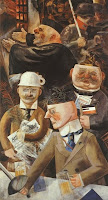 Today, we are going to do the same exercise as on Monday, just the other way round: you will be given the comments (in blue), and you have to compose the argument analysis that corresponds to those statements. Work in groups of 2-3. When you're done, email me your essay for participation points, and don't forget to put the names of all your group members on your essay.
Today, we are going to do the same exercise as on Monday, just the other way round: you will be given the comments (in blue), and you have to compose the argument analysis that corresponds to those statements. Work in groups of 2-3. When you're done, email me your essay for participation points, and don't forget to put the names of all your group members on your essay.You will describe the famous picture above. It is by Georg Grosz and is called "Pillars of Society" ("Stuetzen der Gesellschaft" in German).
In order to analyze this picture, you will need some background knowledge about it, as well as about the time it deals with, and the artist who created it, in order to understand what the artist "wanted to say with it."
Here are your cues:
A. Use meaningful transitions when you proceed from one paragraph to the next! Transitions could be: Thus, accordingly, contrarily, in the same vein, in opposition, another approach to ... could be, as Grosz himself stated, when compared with, etc.
B. INVENT A TITLE FOR YOUR ANALYSIS
C. Start with an ATTENTION CATCHER (one sentence that relates daily life to the topic of the picture).
1. Writer names the issue, relating the title of the picture to its main purpose. Writer redefines linguistic implication of who is ususually called a "pillar" of a society, and who it is in this case. Which society does Grosz mean?
YOUR TEXT
2. Writer describes the tone/feeling/attitude of the picture.
YOUR TEXT
3. Writer describes the picture in detail, discussing binaries of each figure depicted.
YOUR TEXT
4. Writer analyzes meaning of picture based on Grosz' background (his life, his aims, his state of mind, his feelings towards the society he lived in).
YOUR TEXT
5. Writer discusses meaning of picture with regard to Henrik Ibsen's play of the same name.
(Background knowledge about Ibsen's play.)
YOUR TEXT
6. Writer discusses effectiveness of this picture (personal opinion AND implication what it must have meant for Grosz to display that picture in the society he depicted).
YOUR TEXT
7. Writer discusses whether this picture can be called "ART." (Grosz was a Dadaist. Writer needs to explain what the Dada movement was before criticizing it.)
YOUR TEXT
8. Writer concludes with his/her personal opinion about Grosz' advice to artists what the purpose of their pictures should be.
YOUR TEXT
Sunday, September 13, 2009
In-Class, Sept. 14: Analyzing News Article
The first essay prompt will be distributed when we have finished chapter 6.
Today, we are tackling chapter 5. We are going to imitate exactly step by step how to analyze an argument stated in a newspaper article. (Guided practice.) This will provide you with a model of how to proceed when you are writing your unit paper later.
Homework for Wednesday, Sept. 16th, will be to read chapter 5.
In-Class Activity:
(First as a whole-class approach; later in partner work.)
STEP 1: look in your textbook on page 78-82. Here are scans for those who forgot to bring their textbooks.
Read the description of the diagram on page 78, and be prepared to apply what you have learned about premises and revising the thesis before coming to a conclusion.
STEP 2: we will start to go through the sample essay ("Playing by the Antioch Rules") together, paragraph by paragraph, to explain what the author did (the blue comments in parentheses).
STEP 3: while doing so, we will perform analogous steps with this essay about Blagojevich.
Instructions: Go to the link of the Blagojevich article, and copy and paste the text into a Word document. Delete the pictures and icons, for we only need the text (in black). Save it on your desktop. You are going to type your own comments in blue under the text (according to our example in the textbook, pp. 79-82).
We'll do the first few blue comments together. Then, work with one or two neighbors, and type blue comments under each coherent paragraph/statement of the Blagojevich article. When you're done, email me one document per group, and don't forget to indicate all your group's members!
Friday, September 11, 2009
This ad is clearly stating that the Champion brand shoe is a great shoe to buy. Underlying that message is also a statement saying that this shoe isn't just worn, it's walked by the owner. The shoe guides you, just as if it were your pet on a leash, it wants control.
Anti-Smoking
captain morgan
Thursday, September 10, 2009
Powerhouse Gym
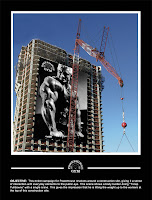
Vegetarian Ad
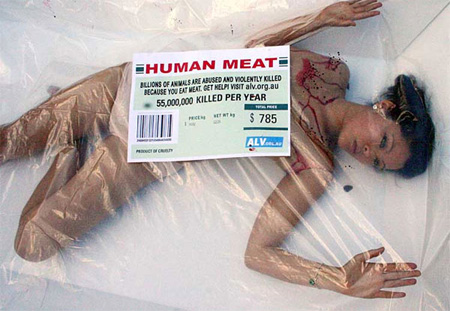
Go Vegetarian Ad
Wednesday, September 9, 2009
Gatorade Ad
happy fathers day
This axe ad wants to imply that wearing axe will be a better way to pick up girls than having a puppy. The ad might also want you to believe that if you wear axe, you will look like the man in the ad.
This advertisement seems to make fun of our fascination with nutrition facts by putting it on rubbish bins, but it really relates to the fact that some people receive their meals, and therefore their only nutrition, from trash. We must be aware of this.
Ciroc
Tuesday, September 8, 2009
Chapter 4: Interpretation, Implications, Hidden Meanings
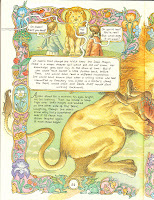

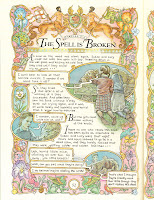
Look at the following three pictures. They are excerpts from the graphic novel version of C. S. Lewis' The Lion, the Witch and the Wardrobe from the Chronicles of Narnia.
Even if you don't know the story, try to interpret those three pages -- what might they allude to? What story do they remind you of? What can they mean in a figurative sense?
Try to go more into detail -- what does the broken stone table stand for?
Can you find other "symbols" that could represent something else?
In-Class Practice II: Group Work
Get together in the groups you worked in last time, and solve the numbers 2-9 on page 55 in your textbook. Below is a scan of the page, in case you forgot to bring your textbook. What implications can you detect in the statements? (Number 1 is an example.) Take some notes, and present your findings to the class.
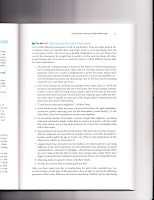
In-Class Practice III: Individual Work
Look at pages 64 and 65 of your textbook. Read about the formula "Seems to Be about X, but Could Also be (Is Really) about Y."
Then, find an ad on the Internet (with an image or video) that seems to be about one thing, but really deals with another thing. Open a new blog thread, insert your picture or hyperlink your video, and compose a short statement similar to the example of the Nike Freestyle commercial evaluation at the bottom of page 64, analyzing why your ad has an implicit meaning.
If you don't finish in class, you can finish it up at home.


Homework for Friday, Sept. 11th:
Read chapter 4. On Friday, we are doing the study guides for chapters 3 and 4, so review the content.
After the Storm, 8 p.m.

After the Storm, 8 p.m.
Climbing over poles and broken branches
On the debris-covered streets,
Walking the dog through the havoc the night after the storm,
I stumbled over those two fledglings, one dead, one still alive,
In a front yard of cat-owners.
Whilst death was certain here, I wondered
Whether my feathered friend would stand the slightest chance
If I took it home.
My dog meanwhile carried its sibling.
Eating moist dog food from tweezers
Birdie survived the night. On the first day
It grew kind of accustomed to my hand. It was still raining.
On the second day, it greeted me with a faint peep when I came in the door.
It still rained.
On the third day, it hopped on my lap.
I did not need the tweezers any more.
It ate out of my fingers.
On the fourth day, the sun was finally shining. We practiced flying in the backyard. It talked to me in its squeaky little voice. The next day would be back to nature.
On the fifth day
When I looked into the cardboard box where it was sleeping
It was dead.
Now I wonder – should I not have taken it home?
Friday, September 4, 2009
SIUC Campus, In the Hallway; Any Day
SIUC Campus, In the Hallway; Any Day
Walking briskly
Pack thrown over shoulder
Down the narrow hall
Not the stairs
What if it were me
How well can he see
Courageous, undaunted
Nothing gets in the way
I can tell one thing; he is free
Free like me
Admiration
With high regard
In some way I believe; He’s free, in more ways than me
An unknown time at an exact place.
An unknown time at an exact place.
A morning at work
An afternoon in thought
The difference wasn’t clear
Only the spot.
Wandering through an organic induced haze
Smiling phases seemed easily unphased.
Talking about the weather and staff
Happily sitting sharing their laughs.
Families’ forgotten loved ones all lost
Pleasures relearned, sensations re-taught
We would sit there and think of times that would come
The past was forever lost the present would succumb
Time would tick tock
Lost in itself Bringing meal times and medications around and about
It seemed to have less meaning than it ever did before
Yet the punch clock stayed resolute reminding us of the chore
And after the meal we would all gather around
We would sit there and think, happily bound.
by Michael Shubert
Driving, 8:00 p.m.
Driving, 8:00 p.m.
I was driving home from the event that night, thinking about how the night turned out. I realized the night went well because I met knew people, talked with friends, grilled out. Sounds like the perfect night for anybody. Not for me, I haven’t had any time to myself for the past three weeks. No time to watch television, no time to hang-out with my girlfriend, no time to play my Xbox. I miss those days, being able to sit and relax. Now these nights, I wake up thinking that today might be the day when I sit down and relax, but look at my schedule and see school, work, rush event, homework and sleep. Just another routine night, another night of running around and getting home late. My night tonight is the same as every night, a night where everyone else seems to enjoy, while I dread the night at hand. Maybe tonight, I can sleep at night and not have anything on my mind about the next day or something I forgot to do before I laid down. Maybe tonight is the night when I sit down for the night.
by Cameron Krones










